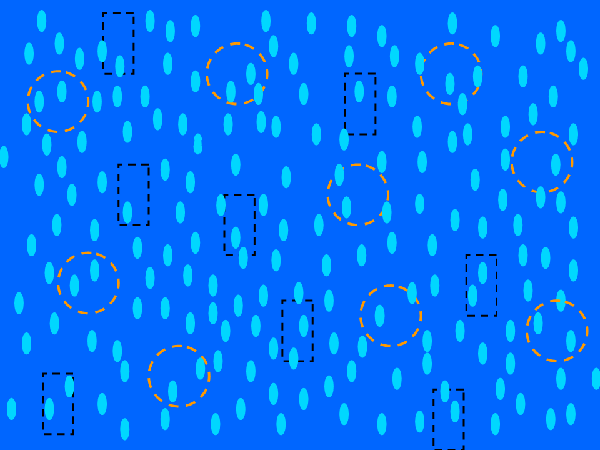11 | Groundwork | Four Observations: Memory
December 30th, 2011 by bruno boutotNote: The five posts entitled “Groundwork” were originally written in 2009. See here.
. #
We hear a lot about Moore’s Law and the doubling of processing capacity, but storage-density’s growth makes the pace of processor improvements look glacial.
Cory Doctorow
Tracking the astounding pace of digital storage #
figure 23: Memory of exchanges in a traditional media #
Observations on figure 23 #
This analysis is fairly straightforward but, as often happens, by outlining the relationships I ended with seeing more than I initially imagined. #
- The three rectangles are, from top to bottom: the advertiser (the orange rectangle), the media (the black rectangle), the user (the light blue rectangle)
- The large circles stand for the exchanges between the media and the users, as shown in our analysis (figure 7): specifically, content exchanges (the big black circle), business exchanges (the big red circle).
- The two kinds of small blue circles (solid and dotted lines) represent the memory, if any exists, of these exchanges.
- What content they have used (the solid blue circle overlapping the big black circle)
- What they have paid for (purchases, subscriptions, classifieds) and what ads have interested them (the solid blue circle overlapping the big red circle).
The media and the advertiser share this information. #
That’s how a “mass” media works: all the knowledge about the readership, the readership profile, and the ad targeting and efficiency is statistical. #
figure 24: Memory of exchanges with users in a Web media #
Observations on figure 24
#
The media wants stable exchanges with the user. So it has to do all it can to create the right conditions. #
We now have as much memory as we want.
We can record every real action of any kind. #
We can keep track of the user as a person, with an identity on which memories can be built. #
And we can track every possible contribution made by the user, from a simple vote to any kind of content (text, images, audio, video, money). #
Finally, we can track how every user shares our content; please note that “our content” now covers everything that is produced within the media: #
- By media professionals
- By other users
- By our advertisers and merchants
- Hosting the user’s memories = the media as a “home” for the user
- Hosting recorded relationships = generating trust
What does memory change?
#
Traditional media had documents and archives, but they were cumbersome to search and use.
We had nothing like digital memory, which can store billions of data every second, data that are easily accessible, easily searchable, and easily expandable.
Digital and interconnected memories change . . . everything! #
Memory changes the space we have for content
#
- We were constrained by the format (paper area for print, linear time for electronic media)
Memory changes the space we sell #
- Advertising prices are based on the scarcity of premium space, just as real estate is
- When space is expandable at will, its value tumbles: buying free space doesn’t make sense
Memory changes the value system
#
- In near infinite space, real estate has less value; data and connections have more value; so relationships (data + connections) have more value
As it happens, Memory changes the space we have for hosting memories (data, connections, relationships) #
- Expandable memory allows us to transform all our exchanges with advertisers, merchant, and readers into relationships.
And obviously, Memory changes the space we are in, because, on the Web . . . #
figure 25: . . . Memory is the medium:
Users and merchants are everywhere on our platform
How do we do business with all of them? #





